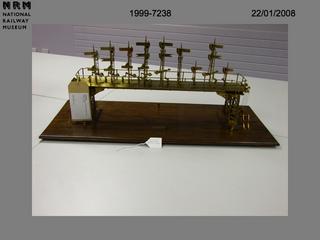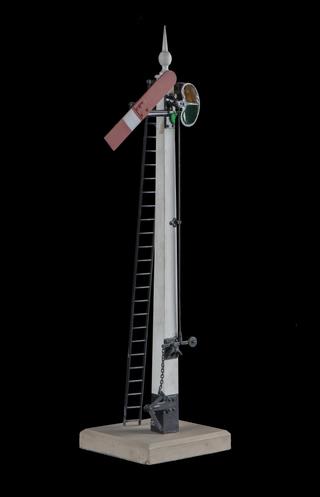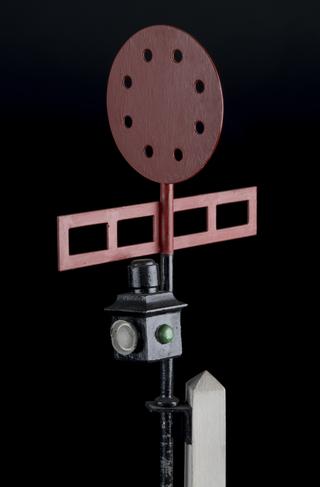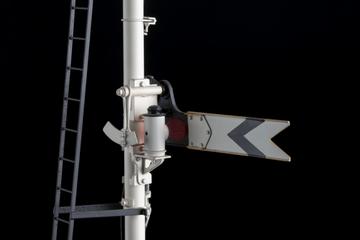
Model of Woods' Vane Signal
- Made:
- c.1912




Model signal, scale 1:16, Wood's Vane signal, c.1838, made c.1912.
Fixed lineside signals were introduced on the Liverpool and Manchester Railway around the year 1834. Edward Woods, appointed the railway's Chief Engineer in 1836, introduced a lineside signal that featured a lamp with red and white aspects - indicating 'danger' and 'safety' respectively - permanently fixed to the top. This signal was only visible at night and by 1838 Wood's design had evolved to encompass vanes for visibility in daytime. The twin vane represented 'danger' and the single vane 'safety' when facing the train.
Details
- Category:
- Railway Models
- Object Number:
- 1912-40
- Materials:
- metal (unknown), wood (unidentified) and paint
- Measurements:
-
overall: 360 mm x 100 mm x 100 mm,
- type:
- model
- credit:
- Cussons, G. Ltd.




